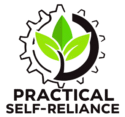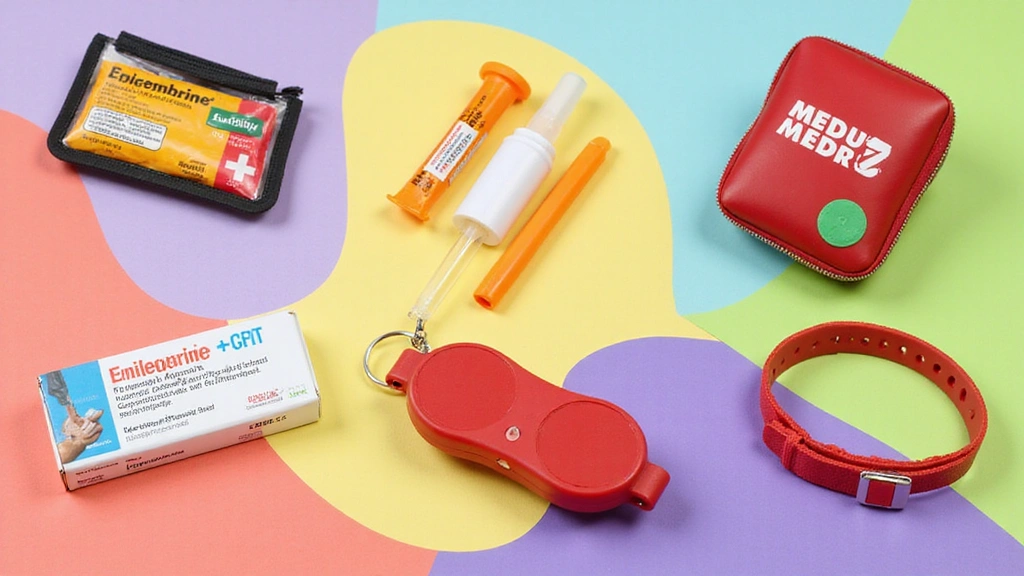Allergic reactions can escalate quickly and knowing how to handle them can be lifesaving. From mild reactions to severe anaphylaxis, being prepared can make all the difference. Let’s delve into seven essential first aid techniques to ensure you’re ready for any allergy-related emergency. Arm yourself with knowledge and confidence, because understanding these techniques can be the difference between a scare and a serious situation.
Ultimately, it’s not just about being reactive; it’s about being proactive. This guide will empower you with vital skills and insights that you can share with friends and family. Don’t underestimate the importance of allergy first aid – it might just save a life!
Contents
- 1. Recognize the Signs of Anaphylaxis
- 2. Stay Calm and Reassure the Affected Person
- 3. Administering Epinephrine: Quick and Effective
- 4. Positioning the Person Safely
- 5. Monitor Vital Signs
- 6. Be Prepared: Have an Allergy Action Plan
- 7. Know When to Seek Professional Help
1. Recognize the Signs of Anaphylaxis

Anaphylaxis can be sudden and severe, so recognizing its signs is crucial. Symptoms can range from hives and swelling to difficulty breathing and a rapid heartbeat. Knowing these signs can help you act quickly.
– **Skin Reactions**: Look for hives, redness, or swelling, especially around the face and throat.
– **Respiratory Issues**: Watch for wheezing, coughing, or shortness of breath. Anaphylaxis can cause throat swelling, leading to difficulty breathing. In such situations, having an EpiPen auto-injector on hand can be a lifesaver, as it delivers a dose of adrenaline to counteract severe allergic reactions.
– **Gastrointestinal Symptoms**: Nausea, vomiting, and diarrhea might occur as the body reacts.
– **Cardiovascular Symptoms**: Dizziness or a fast heartbeat can indicate a serious reaction.
Being aware of these symptoms is your first step in providing effective allergy first aid. Always take them seriously, as they may progress quickly. Additionally, it’s wise to keep supplies handy. A comprehensive first aid kit with allergy supplies can help you be prepared for various emergencies.
For ongoing allergy management, having allergy relief medication (antihistamines) like cetirizine can alleviate symptoms and improve comfort. Always ensure you’re equipped with the right tools to respond swiftly to allergic reactions.
2. Stay Calm and Reassure the Affected Person

In an allergy emergency, panicking doesn’t help anyone. Keeping a level head is vital. If someone is experiencing a reaction, calmly reassuring them can ease their anxiety and help them focus on the next steps.
– Tone matters: Use a soothing voice and speak clearly; your calm demeanor can help reduce their stress. Consider using calming essential oil roll-on to create a more soothing environment. The calming scents can help both you and the affected person relax during the situation.
– Encourage deep breathing: Remind them to take slow, deep breaths if they’re feeling anxious. Your reassurance can help them regain control, and having a ready america 72 hour emergency kit on hand can ensure you have the necessary supplies to assist in an allergic reaction.
– Stay with them: Never leave someone alone during a severe reaction. Your presence can be comforting. It’s a good idea to have a portable first aid manual nearby, as it can guide you through the necessary steps to take while you provide support.
Taking a moment to stay composed can make a significant difference. When the person feels supported, they can better cope with their symptoms and follow the necessary first aid procedures.
3. Administering Epinephrine: Quick and Effective

If you suspect anaphylaxis, epinephrine is your best friend. This medication can reverse severe allergic reactions in a matter of minutes, making it essential to know how to administer it properly. Every second counts, so having the right tools and knowledge is crucial.
– **Prepare the Auto-Injector**: A reliable option is the EpiPen Auto-Injector. Remove the cap and hold it firmly in your fist, with the tip pointing downward. Never touch the end with the needle.
– **Give the Injection**: Administer into the outer thigh, and hold it in place for a few seconds to ensure proper delivery of the medication.
– **Call Emergency Services**: After administering epinephrine, seek immediate medical help, even if symptoms seem to improve.
It’s crucial to have epinephrine handy, especially for those at risk of severe allergies. Make sure you’re trained on how to use it properly, as it can be a lifesaver in an emergency. A great resource for learning more about first aid techniques is the First Aid Training Manual. This comprehensive guide can help you understand not only how to handle allergic reactions but also various emergency situations. Being prepared can make all the difference when it matters most.
4. Positioning the Person Safely

How you position someone having an allergic reaction can greatly affect their comfort and safety. This technique can help manage symptoms and prevent further complications.
– **Sitting Position**: If the person has difficulty breathing, help them sit up slightly; this can ease airway pressure and help them breathe easier.
– **Lying Down**: If they feel faint or weak, assist them in lying down with their legs elevated. This position helps to maintain blood flow.
– **Avoid Tight Clothing**: Loosen any restrictive clothing to improve their comfort and breathing. To make this easier, consider using the loosenings clothing aid, which includes adjustable waist buckle extenders. These can quickly alleviate discomfort by allowing for a better fit without the need for sewing.
Proper positioning is an often-overlooked aspect of allergy first aid. It’s simple but can significantly help in managing their condition until professional help arrives. Additionally, having a first aid kit on hand ensures that you are prepared for any emergencies, providing essential tools to assist while waiting for medical assistance.
5. Monitor Vital Signs

Keeping track of vital signs during an allergic reaction is crucial. Monitoring can help you evaluate the severity of the situation and provide important information to emergency professionals.
– **Check Breathing**: Count breaths per minute. A count above 30 or struggling breaths may indicate a worsening condition. A helpful tool for monitoring oxygen levels is the Zacurate 500BL fingertip pulse oximeter, which allows you to quickly check blood oxygen saturation and ensure the person is getting enough oxygen.
– **Pulse Rate**: Measure their pulse. A rapid or weak pulse can signal distress. To keep accurate readings, consider using a blood pressure monitor, like the iHealth Track smart upper arm blood pressure monitor, which also tracks heart rate and can provide a comprehensive view of their cardiovascular status.
– **Skin Condition**: Look for changes in skin color, warmth, and moisture, as these can indicate shock or other complications.
By keeping an eye on these signs and leveraging these tools, you can provide accurate updates to medical responders and help ensure the person receives the right care promptly.
6. Be Prepared: Have an Allergy Action Plan

Preparation can save lives. An allergy action plan is essential for those with severe allergies, as it outlines the steps to take in the event of a reaction and ensures everyone involved is on the same page.
– Create an emergency plan: Your plan should detail who to call, what medications to use, and steps to take in various scenarios. A helpful tool for this is the Allergy Action Plan Template, which can guide you in organizing the necessary information clearly and effectively. Make sure everyone knows the plan.
– Educate your circle: Share your action plan with friends, family, and caregivers. The more people who understand the plan, the better prepared everyone will be. This is particularly important when it comes to knowing how to use vital medications, such as the EpiPen Auto-Injector. Having this life-saving device readily available can make all the difference during an allergic reaction.
– Review regularly: Update your plan as needed, especially when new allergies are discovered or changes in medication occur. Consider keeping a First Aid Kit for Allergies on hand, which includes various emergency supplies, to ensure that you are always prepared for any situation.
Having a solid action plan in place can ease anxiety and ensure a prompt response during emergencies. It’s all about being ahead of the game—every detail counts when lives are at stake.
7. Know When to Seek Professional Help

Understanding when to seek immediate medical attention is key in allergy first aid. Certain symptoms warrant an urgent response, even if they seem mild at first.
– **Persistent Symptoms**: If symptoms do not improve after administering epinephrine from an EpiPen Auto-Injector or worsen, it’s essential to get help immediately. Having an epinephrine auto-injector on hand can make a crucial difference in life-threatening situations.
– **Multiple Symptoms**: If a person displays several symptoms simultaneously, such as hives and difficulty breathing, do not hesitate to call emergency services. In the meantime, having a well-stocked first aid kit for allergies can help you manage immediate concerns until professional help arrives.
– **Uncertainty**: If you are in doubt about the severity of their condition, it’s always better to err on the side of caution. For minor allergic reactions, allergy relief antihistamine tablets can provide relief and may help stabilize symptoms while you assess the situation.
Recognizing the right moment to seek professional help is part of being informed and prepared. Never hesitate if you feel something is wrong. The more informed you are, the better you can help.
Conclusion

Being prepared for allergic reactions isn’t just about having medications on hand; it’s about understanding how to act fast and effectively. By familiarizing yourself with these seven techniques, you can be a crucial support for someone in need. Allergy first aid is not just about knowledge—it’s about having the confidence to act. Share this information, empower others, and remember: in an emergency, every second counts.
Note: We aim to provide accurate product links, but some may occasionally expire or become unavailable. If this happens, please search directly on Amazon for the product or a suitable alternative.
This post contains Amazon affiliate links, meaning I may earn a small commission if you purchase through my links, at no extra cost to you.

